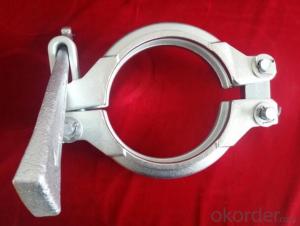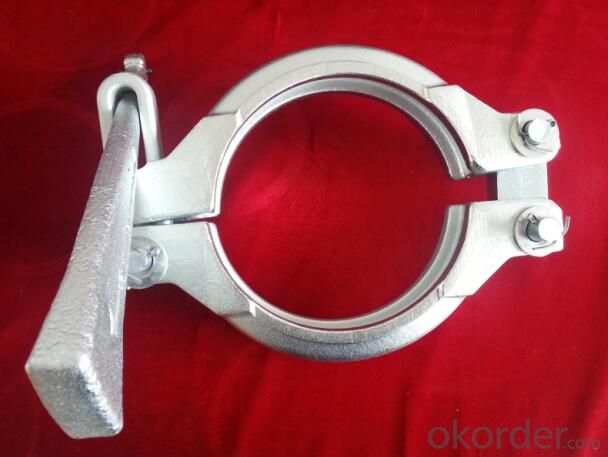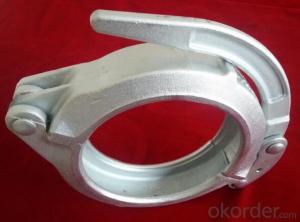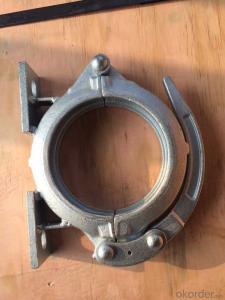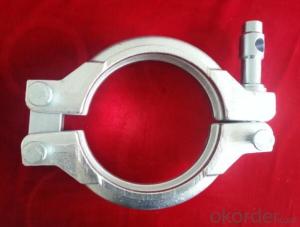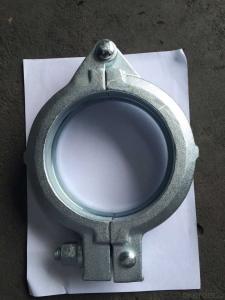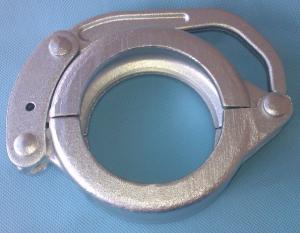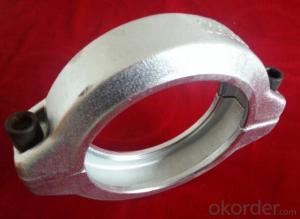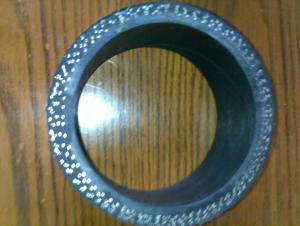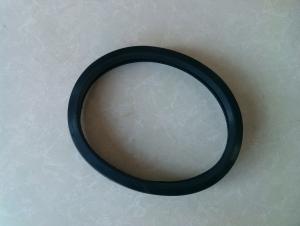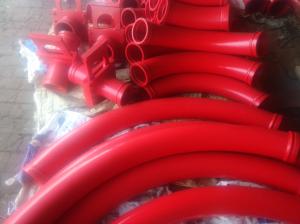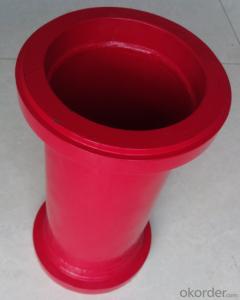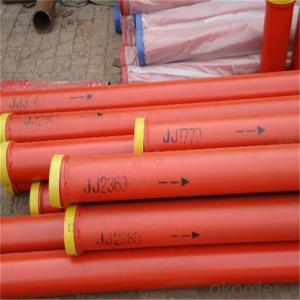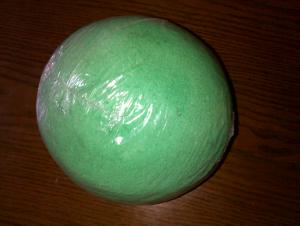Concrete Pump Clamp Coupling MF125 Forged
- Loading Port:
- China main port
- Payment Terms:
- TT OR LC
- Min Order Qty:
- 50 PCS
- Supply Capability:
- 1000 PCS/month
OKorder Service Pledge
OKorder Financial Service
You Might Also Like
Product Description:
A coupling is a device used to connect two delivery pieps together at their ends for the purpose of transmitting, and prevent the concrete from leaking. Couplings do not normally allow disconnection of shafts during operation.
Main Product Features:
1. Use high quality steel. After high-temperature 1200 forging,it’s shaped.
2.High temperature forging.
3.convenient to use, easy operation,and high safety.
4.good sealing,wear-resising,longer service life.
5.do not restrict the steering tubes, pipes during the working process can be 360 degrees rotation.
6.used in concrete pump truck,concrete pump and pipeline connection seal in construction
work equipment.
Product Specifications:
1.Forged
2.2--8 inch
3.Galvanizing/Baking varnish
4.More durable,light,beautiful
Production steps:
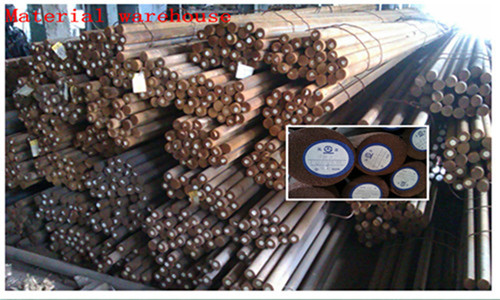
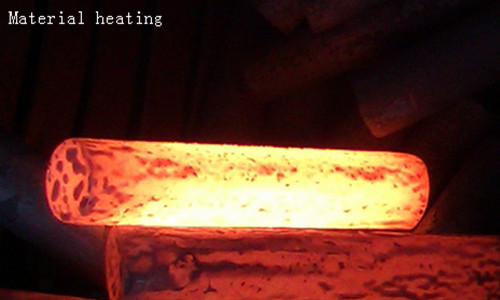
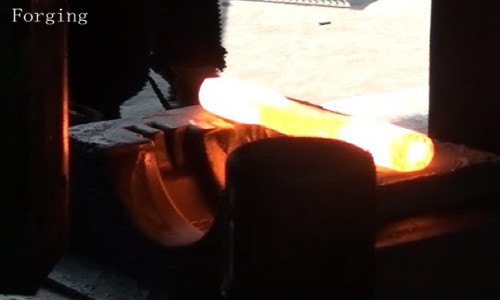
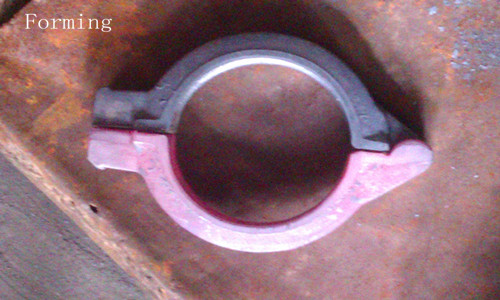
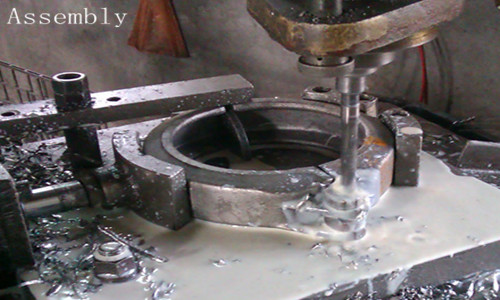
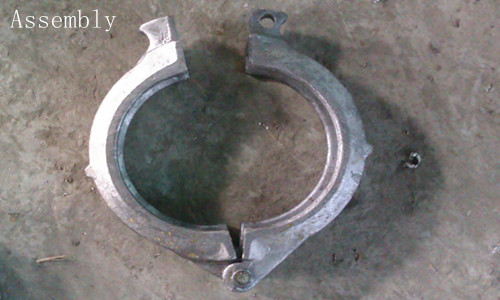
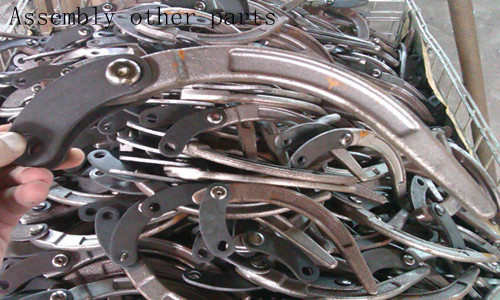
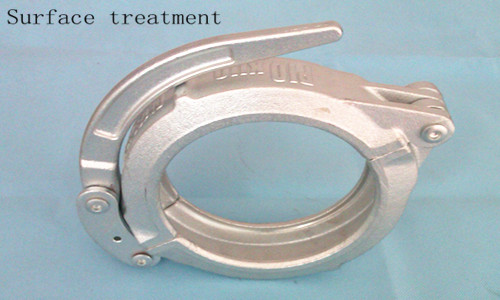
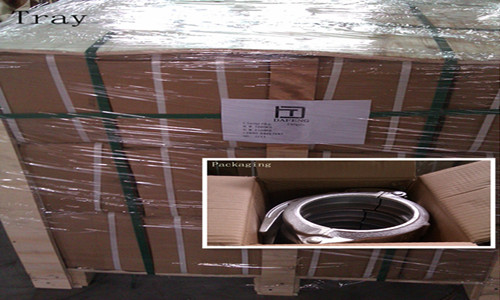
Concrete pump clamp Catalogue
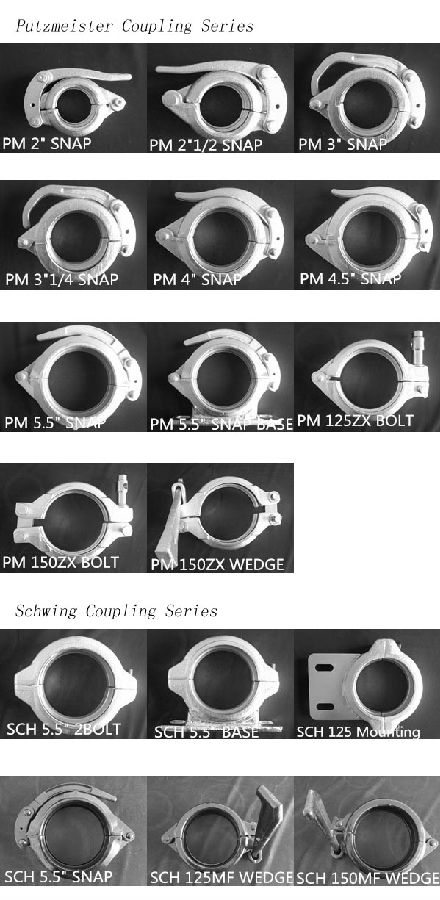
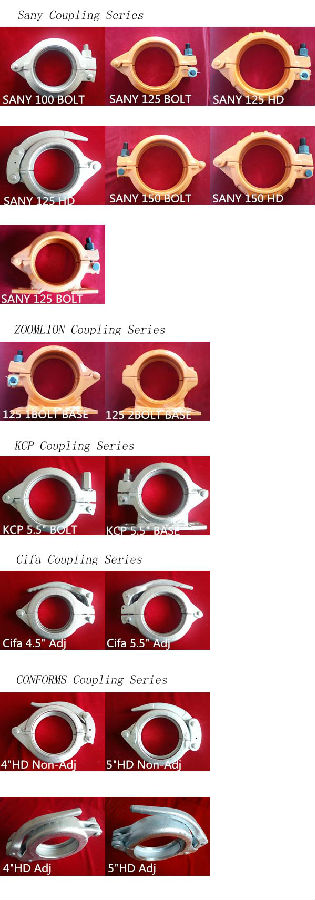
FAQ
1.How do you regarding your product quality?
As our principle is more safety to save more. In China, there are lots of manufactures of this line, but we are the first one that use the forging technic in producing, firmly meet the PM standard.
2.Can I get some samples?
Of course you can. Small sample for free, but you pay the express. For some products are not small, like concrete pump pipe, it’s very difficult to deliver one pipe of 3000mm. If it’s possible, we’d like that you can come here to visit our factory. Welcome!
3. I want to make our logo on the products, is that ok?
Yes, it’s totally ok. OME is available from us.What you should do is send your logo, brand name, or picture to us. And let other things leave on us.
- Q: Are there any specific maintenance requirements for concrete pump spare parts?
- Yes, there are specific maintenance requirements for concrete pump spare parts. Regular inspections, cleaning, and lubrication are essential to ensure the optimal performance and longevity of the parts. Additionally, proper storage, handling, and timely replacement of worn-out components are crucial to maintain the efficiency and safety of the concrete pump.
- Q: How can one ensure proper functioning of concrete pump spare parts after installation?
- To guarantee the effective operation of concrete pump spare parts post-installation, several pivotal measures can be taken: 1. Quality Assurance: It is imperative to procure spare parts from reputable manufacturers or suppliers. Confirm that the spare parts are of superior quality, constructed from durable materials, and adhere to industry standards. This will significantly diminish the risk of malfunctioning components. 2. Proper Installation: It is crucial to adhere to the manufacturer's guidelines and recommendations regarding the installation of concrete pump spare parts. Each element should be installed accurately, with the appropriate torque and alignment. Seeking professional assistance if necessary is advisable to ensure proper installation. 3. Regular Maintenance: Consistent maintenance is vital for the effective operation of concrete pump spare parts. Establish a maintenance schedule and adhere to it diligently. This encompasses inspecting and cleaning the spare parts, checking for any indications of wear or damage, and lubricating moving parts as required. 4. Timely Replacement: Over time, concrete pump spare parts may deteriorate or sustain damage due to continuous usage. Monitoring the condition of the spare parts is crucial, and replacing them promptly when necessary is essential. Regularly inspecting the components and promptly replacing any worn-out or damaged parts will help maintain the proper functioning of the pump. 5. Training and Education: Ensuring that operators and maintenance personnel receive proper training and education is vital for the effective operation of concrete pump spare parts. They should be familiar with the equipment, its spare parts, and the correct procedures for installation and maintenance. Regular training sessions can enhance their knowledge and skills, resulting in better maintenance and performance of the spare parts. By adhering to these steps, one can ensure the proper functioning of concrete pump spare parts after installation, thereby enhancing the overall efficiency and longevity of the equipment.
- Q: How often should hopper cylinders be inspected or replaced in a concrete pump?
- Hopper cylinders in a concrete pump should be inspected regularly, ideally after every use, to ensure their proper functioning and prevent any potential issues. If any signs of wear, damage, or decreased performance are noticed, it is recommended to replace the hopper cylinders immediately to maintain the efficiency and safety of the concrete pump.
- Q: What is the farthest pumping distance of concrete pump truck?
- Ground pump or air pump, the current delivery distance of the pump is 56, the ground pump can transport 300 meters
- Q: How long does a concrete pump piston typically last?
- The duration of a concrete pump piston's life can differ based on various factors. Typically, a concrete pump piston will endure approximately 20,000 to 40,000 cubic yards of pumping. However, this approximation can be influenced by multiple aspects, including the concrete's quality, pump maintenance and care, operating conditions, and operator expertise. Consistent maintenance and servicing, which encompass cleaning and lubricating the piston, can considerably lengthen its lifespan. It is crucial to regularly assess the wear and tear of the piston to guarantee its optimal performance and replace it as needed.
- Q: Why would the plugging concrete pump pipe
- Pump operator in pumping construction should concentrate, always pay attention to pumping pressure meter readings, once found that the pressure gauge reading suddenly increased, should immediately anti pump 2-3 stroke, and then pump, pipe can be excluded
- Q: What are the precautions for gas washing of concrete pump?
- If it is found that the wash is not moving, it should first close the intake valve, and then slowly open the exhaust valve bleeding, and then try to segment cleaning.
- Q: What are the signs of a faulty concrete pump control panel?
- A faulty concrete pump control panel can be identified through various indicators. To begin with, the control panel not powering on or experiencing intermittent power loss may suggest a faulty electrical connection or a malfunctioning power supply. This can hinder the proper functioning of the panel and its ability to control the concrete pump. Furthermore, error messages or error codes displayed on the control panel may indicate issues with the internal components or sensors. These errors can range from minor malfunctions to more serious problems that require immediate attention. Additionally, an erratic behavior or unresponsive controls of the control panel can be observed. If the buttons or switches do not respond when pressed or behave inconsistently, it could signal a problem with the panel's circuitry or wiring. Moreover, the occurrence of unusual noises or vibrations emanating from the control panel may be a sign of internal mechanical issues. These could include loose or damaged components, faulty relays, or malfunctioning motors. Lastly, if the concrete pump does not perform as expected, it may be attributed to a faulty control panel. Insufficient pressure, incorrect flow rates, or difficulties in starting or stopping the pump can all indicate a malfunctioning control panel. Regardless of the indicator, it is crucial to seek the assistance of a professional technician or the manufacturer for inspection, diagnosis, and repair if there is suspicion of a faulty control panel in a concrete pump.
- Q: What are the key considerations when purchasing spare parts for a concrete pump?
- When purchasing spare parts for a concrete pump, the key considerations include ensuring compatibility with the specific make and model of the pump, quality and durability of the parts, availability and delivery time, cost-effectiveness, and the reputation and reliability of the supplier.
- Q: How can a faulty outrigger affect the stability of the pump?
- A faulty outrigger can significantly affect the stability of a pump. The outrigger is an essential component that helps to support and balance the pump during operation. It acts as a stabilizer and prevents the pump from tipping over or vibrating excessively. If the outrigger is faulty, it may not provide the necessary support and stability required for the pump to function properly. This can lead to various stability issues. For example, the pump may become more prone to tipping over, especially if it is subjected to uneven surfaces or strong vibrations. This can be extremely dangerous, especially if the pump is dealing with hazardous or flammable materials. Additionally, a faulty outrigger can cause the pump to vibrate excessively. Vibrations can lead to increased wear and tear on the pump, resulting in premature failure of critical components. Excessive vibrations can also cause damage to the surrounding infrastructure or equipment, leading to costly repairs or even accidents. Furthermore, a faulty outrigger can affect the accuracy and efficiency of the pump's operation. If the pump is not properly stabilized, it may not be able to maintain a consistent flow rate or pressure, affecting its performance. This can result in inefficiencies, increased energy consumption, and even reduced productivity. In conclusion, a faulty outrigger can have a detrimental impact on the stability of a pump. It can increase the risk of accidents, cause excessive vibrations, and affect the pump's performance and efficiency. Regular maintenance and inspections are crucial to ensure that the outrigger and other support systems are functioning correctly to maintain the stability and reliability of the pump.
Send your message to us
Concrete Pump Clamp Coupling MF125 Forged
- Loading Port:
- China main port
- Payment Terms:
- TT OR LC
- Min Order Qty:
- 50 PCS
- Supply Capability:
- 1000 PCS/month
OKorder Service Pledge
OKorder Financial Service
Similar products
Hot products
Hot Searches
Related keywords
